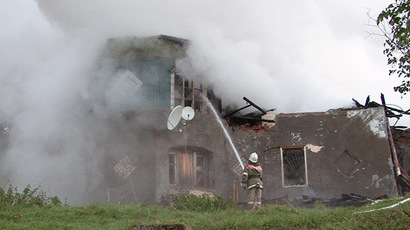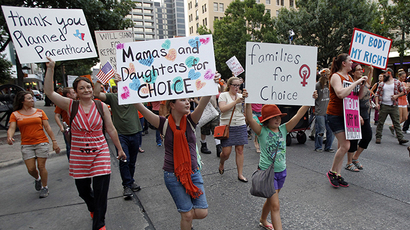Medical errors kill hundreds of thousands each year in the US
Staggering new numbers are shedding light on a critical problem in the American healthcare system.
A recent report by the Journal of Patient Safety indicates that between 200,000 and 440,000 people are killed each year in the United States from preventable medical errors. These patients aren’t dying from the condition that forced them to go to the hospital in the first place. They’re dying from unintended mishaps.
Eric Andrist is overcome with emotion as he remembers the death of his sister Cali. Andrist cared for his mentally disabled sister day and night, and recalls that once he took her to the emergency room at Providence St Joseph's in Burbank, California for a stomachache. Days later she was dead.
“My sister was writhing in pain for so long. It just haunts me. The last moments my sister, are just engrained in my head,” Adrist said.
A binder full of medical records shows a long list of possible mistakes healthcare professionals made when treating Cali.
Deadly medical errors can happen at even the most highly rated hospitals. New research shows that up to 440,000 people die every year in America from preventable medical mistakes. That would make it the third leading cause of death in the US, following heart disease and cancer.
“The incidence of people dying of errors in hospitals is abysmal in this country. It’s really a crisis level problem,” said Leah Binder, the president and CEO of Leapfrog Group, a non-profit watchdog group which rates hospital safety in the US.
In 1999, the Institute of Medicine reported that up to 98,000 people a year die because of mistakes in hospitals. In 2013, a study in the Journal of Patient Safety said that number may now be between 210,000 and 440,000 patients: more than the population of Miami, Florida.
Not all medical errors kill, but they can still cause a lifetime of pain.
“When I left the operating room, I had a fever, I was nauseous, I was having chills, and I was told that was probably due to the anesthesia,” said Alicia Cole, a medical error survivor.
Cole, who used to work as an actress and model, went to the hospital for a routine myomectomy to remove two uterine fibroids. She expected to be out in a few days. Instead, she contracted Necrotizing Fasciitis, also known as flesh-eating bacteria.
“You can see this is all eaten out here, and cut out. Here it is going down my thigh,” Cole said as she showed photos of the infection overtaking her body’s midsection.
Years later Cole is still in physical therapy.
Her claim of hospital injury is not isolated.
Shelly Skalicky was diagnosed with Spina Bifida as a child. In 2008, she went into the hospital for elective surgery to relieve some of her symptoms.
Skalicky and her husband Danny Long used to enjoy an active outdoor lifestyle. However, after her trip to the hospital, Skalicky came out a quadriplegic and now requires round the clock care.
Home videos show Long helping his wife to do the simplest tasks.
“We have never been allowed to talk to any doctors. We’re not allowed to talk to the patients’ safety department. We’re not allowed to talk to the ethics department. We’re not allowed to talk to anybody except hospital lawyers,” said Long.
Because some states have caps on malpractice claims, many lawyers refuse to take on cases of medical error.
Despite their frustration with the healthcare system, their love has strengthened during the struggle.
“I rely on her as much as she relies on me. If most guys were honest they would have to admit that too. She is my rock,” said Long.
Many healthcare professionals want to reduce accidents but transparency remains a major barrier.
“It’s long since been time that we have a national conversation about these deaths in hospitals,” said Binder.
A requirement in the Affordable Care Act encourages Medicare providers to report medical errors, but it stops short of requiring all health care providers from participating.
“The best hospitals find ways to create safety nets around the mistakes they expect people to make,” said Binder. “They double-count their sponges, they barcode their sponges, to double check they are not leaving sponges inside a patient. There is barcoding for medication administration now too,” Binder added.
And while technology might help, simple, inexpensive things like good hygiene can prevent infection.
In Alicia Cole’s case, the State Health Department found her hospital had broken several patient safety laws.
“Ask your doctor what the infection rate is for the procedure you’re going to have,” said Cole
“Document everything. Take a little notebook with you and write down every drug they give you. Make sure you have your cell phone with your little camera so you can take pictures of things,” said Andrist.
“It’s not right that in a country as wealthy as the US and with the resources that we have, there’s no reasons patients should have to go through that,” Cole added.














